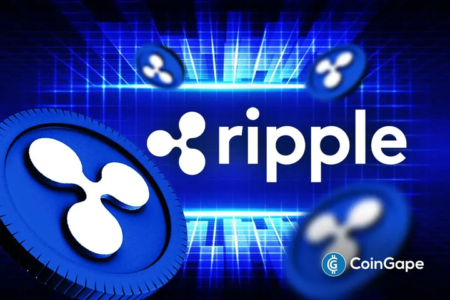Understanding Canxium: A Game-Changer in Cryptocurrency Mining
Cryptocurrency mining has always been a delicate balancing act between price fluctuations, operational costs, and overall network stability. Bitcoin exemplifies this dynamic vividly; when its price surges, miners flock to capitalize on the profits. However, when Bitcoin’s value nosedives, miners often abandon their operations, leading to a drop in hash power. Enter Canxium (CAU), a Proof-of-Work blockchain that aims to address these issues with a constant-cost mining model and a self-balancing supply system, designed to mitigate volatility and enhance predictability in mining.
As of October 2025, Canxium’s price is fluctuating between $0.37 and $0.39, with a market cap of approximately $500,000. Despite being a low-cap token, Canxium has piqued community interest due to its innovative approach to mining. Its unique model, which seeks to stabilize mining profitability outside the influences of market volatility, could revolutionize how cryptocurrencies are mined, providing a steady income stream for miners regardless of BTC price movements.
The Price-Driven Nature of Bitcoin Mining
Bitcoin mining remains heavily influenced by its price, making mining viability contingent on the cryptocurrency’s market performance. The Bitcoin network adjusts its mining difficulty approximately every 2,016 blocks to maintain an average block creation time of ten minutes. This adjustment takes into account fluctuations in energy costs, hardware efficiency, and Bitcoin’s price, which causes the profit margins for miners to shift rapidly.
As Bitcoin’s price rises, mining operations ramp up, often sending hash power soaring. This phenomenon has seen mining farms in regions like Texas, Iceland, and Kazakhstan capture a larger share of the global hash rate. However, as the network responds to increased hash power by adjusting the difficulty level, profit margins often shrink. Currently, the estimated average production cost per Bitcoin sits around $106,000, with significant regional variations. For example, miners in regions leveraging hydropower, such as Quebec or Sichuan, can operate below $70,000, while those in the U.S. might face costs exceeding $120,000. Unsurprisingly, a dip in Bitcoin’s price below these thresholds often forces smaller miners to exit the market.
How Canxium’s Constant-Cost Mining Works
Canxium’s primary mission is to make mining profitable and predictable, irrespective of the often-volatile market dynamics. At its core is a system called Retained Proof of Work (RdPoW), a modified Proof-of-Work protocol that allows miners to conduct computations offline and submit completed proofs later. The intent behind this model is to maintain consistent energy costs for each CAU coin, irrespective of price fluctuations in the broader market.
According to an update from the Canxium team in 2025, the RdPoW model aims to decrease wasted hash power by decoupling the cost of mining from market volatility. This can potentially open doors for miners operating in areas with unstable internet connections, enabling them to participate without the typical constraints seen in traditional mining setups. Although this supply adjustment mechanism has theoretical advantages, its real-life efficacy remains unverified by independent research, making its practical application an area of ongoing observation.
Innovative Features of the Canxium Network
Canxium.org has outlined several innovative features integral to its network design as of October 2025. These include a fixed cost per unit aimed at stabilizing miner economics, a demand-responsive supply model that dynamically adjusts coin issuance based on network activity, and the RdPoW consensus mechanism that supports delayed proof submissions, thereby reducing wasted computational energy.
Additionally, Canxium has hinted at future implementations such as multi-algorithm mining and a hybrid Proof-of-Stake (PoS) staking model, which would require approximately 320 CAU tokens. However, these features are still in early development stages and have not yet been fully realized. Importantly, the Canxium system has yet to undergo independent audits, and its performance has only been demonstrated through internal documentation and community testing, raising concerns about its stability and potential risks.
The Experimental Nature of Canxium: Pros and Cons
Though Canxium’s ‘constant-cost’ model has the potential to significantly alter the landscape of mining economics by making participation more inclusive, it is not without its challenges. Low trading volumes and limited liquidity hinder the CAU token’s utility in micropayments and cross-border transactions. Furthermore, community discussions around integrating with other platforms, such as cross-mining compatibility with Kaspa and potential links to Ravencoin, remain speculative at this stage.
Currently, CAU is primarily available on exchanges like MEXC and CoinEx, which limits its access and liquidity. Since its launch in 2023, Canxium has seen a series of code updates and community-driven initiatives, with some members branding it as “the fix for Bitcoin’s broken incentives,” asserting that it offers stable costs for real-money transactions. However, these views reflect individual opinions and are not yet substantiated by formal validation.
The Path Forward for Canxium: Validation and Integration
For Canxium to transition from a theoretical framework to a credible alternative within the cryptocurrency mining ecosystem, several milestones must be achieved. These include consistent operational performance under real-world conditions, independent security audits to corroborate its architectural integrity, and a deeper integration with major exchanges and custodial services.
Until these objectives are met, Canxium will remain in the experimental stage, and its viability as a long-term solution for the volatility seen in mining economics remains questionable. The success of Canxium’s innovations could significantly impact mining participation and redefine how miners perceive profitability amidst ever-changing market conditions.
Final Thoughts: The Future of Mining with Canxium
Canxium presents one of the more innovative attempts to rethink Proof-of-Work economics with its fixed-cost and adaptive-supply mechanisms. While its concepts are promising, true validation will only come with sustained operational success in real-world scenarios. As the cryptocurrency landscape continues to evolve, Canxium’s approach to stabilizing mining may well be worth monitoring, as it could offer new avenues for miners seeking greater reliability and predictability. However, for now, the holistic assessment of its potential will evolve as the project matures and addresses its current limitations.

















